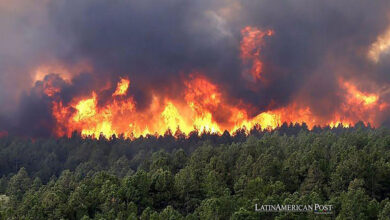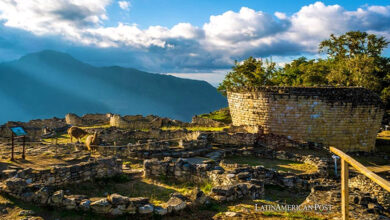The UN’s Plan To Protect The Most Vulnerable Regions From Extreme Weather Events
The UN and WMO initiative seeks to provide a third of the world's population with warning and action systems to deal with natural disasters resulting from the climate crisis.

Photo: Pixabay
LatinAmerican Post | Brandon Martínez Salazar
Listen to this article
Leer en español: El plan de la ONU para proteger a las regiones más vulnerables de los eventos climáticos extremos
Without a doubt, extreme weather events are one of the most frequent problems that humanity has had to face in recent history. The cause of this situation is climate change, which every year causes different disasters in almost the entire planet and, in turn, puts the lives of thousands of people at risk. However, a new project led by the World Meteorological Organization seeks to create an early warning system that allows the entire world population to be protected from climatic phenomena and that in the long term will also help all inhabitants to adapt to environmental contingencies.
What is this alert system about?
This is an action plan that aims to be carried out over a period of five years. This plan will be presented at the UN climate conference, to be held in November in Egypt. Through this initiative, which was carried out in connection with World Meteorological Day, the aim is to reduce the risk of natural disasters to a greater extent, taking into account alertness and preventive action.
Due to the environmental crisis, people are exposed to increasingly complex circumstances, since climate and water phenomena have become frequent and intense in recent times. All this is a result of population growth, urban development and the impact on the environment due to the exploitation of resources.
Therefore, these systems have the function of real-time monitoring of atmospheric conditions, made up of a series of integrated tools and resources to inform citizens about possible heat waves, floods or droughts that are going to occur in a determinated place.
In this way, this initiative believes in the need to bring to underdeveloped countries the warning systems that the most economically advanced nations already have. In this way, it will be possible to predict the possibilities of strong climatic events, save lives and develop the means of subsistence in the most vulnerable populations.
Concerns and needs
In regions such as Africa, the level of vulnerability to the impact of extreme weather events reaches 60% of its inhabitants. A figure that is part of the third of the world's population that is unprotected and does not have access to warning systems about upcoming events or contingency plans.
For the Secretary General of the UN, these circumstances are unacceptable because today's world requires action plans to be executed in all parts of the planet.
“Let us recognize the value of early warning and action as critical tools to reduce disaster risk and support adaptation to climate change. Early warning systems save lives. Let's make sure they work for everyone,” explained Antonio Gutiérrez.
Also read: The forgotten wars: current armed conflicts in the world
In the same way, for Pretteri Taalas, secretary general of OMM, you must invest today to save in the future. In his opinion, it is essential to invest 1.5 billion dollars to improve infrastructure and quality of services in underdeveloped countries.
Now, Taalas's contribution is quite accurate when compared to the data from the Global Adaptation Commission that explains how the implementation of climate monitoring tools could return the investment more than ten times with just a day's warning about a Meteorological phenomenon.
Impact in Latin America
Latin America is one of the regions of the planet that needs help for real-time monitoring of the extreme effects of climate. High temperatures in Central America and the Caribbean, droughts in Mexico, fires in the Amazon, tropical cyclones in the Atlantic and rising sea levels are scenarios that concern the environmental community on the continent.
Consequences of these phenomena in food have occurred in countries such as Guatemala, which has had a loss of 80% of the corn harvest, or in Mexico, which also had damages in the same sector along with sorghum and sunflower due to severe droughts.
Now, in Colombia so far in 2022, 498 disasters have been reported due to the constant rains in 249 municipalities that have claimed the lives of 55 people. Not only nature is responsible for these events but also environmental deforestation that leads to floods and landslides.
That is why it is essential that Latin America is key in the implementation of warning systems since the conditions of inequality and poverty that the region is experiencing make the problem more acute.




